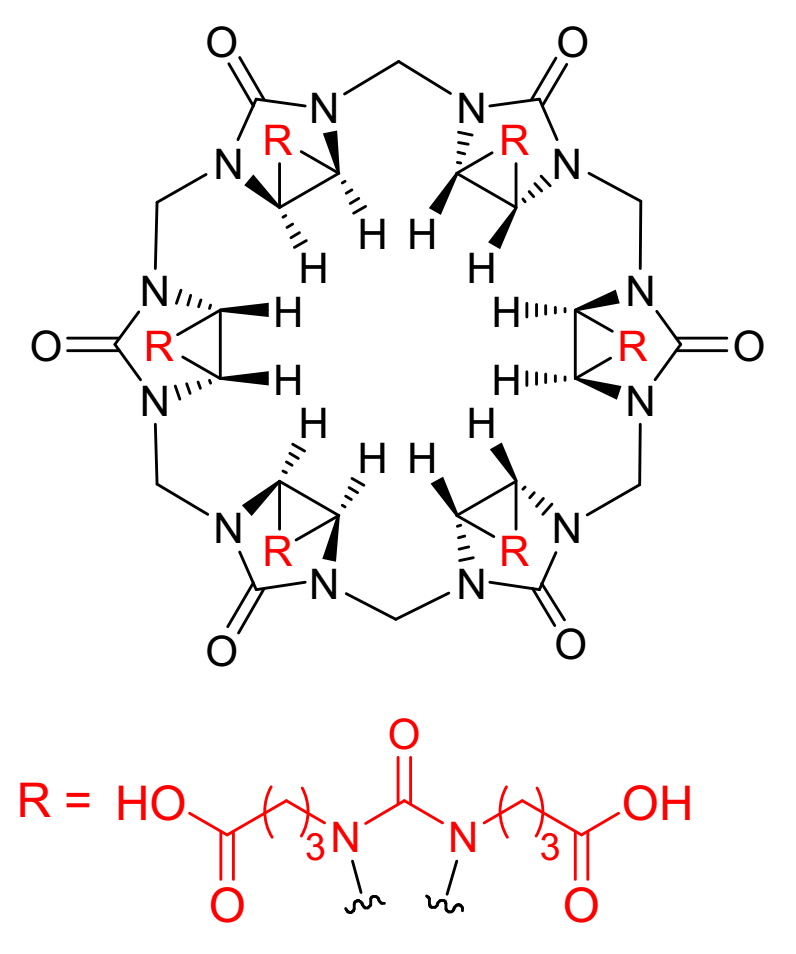Binding Properties
| 𝜈 | Molecule 1 : 1 Host | ||
| Ka = | 360.0 | ± 10.0 | M-1 |
| Kd = | |||
| logKa = | |||
| T | 30.0 °C | ||
| Energy | kJ mol-1 | kcal mol-1 | |||
|---|---|---|---|---|---|
| ΔG | = | -14.84 | ± 0.07 | -3.55 | ± 0.02 |
| ΔH | = | -40.9 | ± 0.6 | -9.78 | ± 0.14 |
| -TΔS | = | 26.1 | 6.24 | ||
| J mol-1 K-1 | cal mol-1 K-1 | ||||
| ΔS | = | -86.1 | -20.6 | ||
These are the specifications of the determination of the experimental results.
| Detection Method: | Direct | ||
| Assay Type: | Direct Binding Assay | ||
| Technique: | Isothermal Titration Calorimetry | ||
| Instrument: | MircoCal VP-ITC | ||
| VCell | = | 1400.0 𝜇L | |
| VSyringe | = | 350.0 𝜇L | |
| cmolecule | = | 4020.0 𝜇M syringe | |
| cpartner | = | 1000.0 𝜇M cell | |
| Vinjection | = | 10.0 𝜇L | |
| Vinit | = | 10.0 𝜇L | |
Detailed information about the solvation.
| Solvent System | Buffer System | 30 mM phosphate pH-7.2 |
| Solvents | water | |
| Additives | dihydrogen phos... | |
| hydrogenphosphate | ||
| Source of Concentration | estimated | |
| Total concentration | 30.0 mM | |
| pH | 7.2 |
Please find here information about the dataset this interaction is part of.
| Citation: |
V. Havel, V. Sindelar, M. Babiak, SupraBank 2024, Modulation of Bambusuril Anion Affinity in Water (dataset). https://doi.org/10.34804/supra.20210928363 |
| Link: | https://doi.org/10.34804/supra.20210928363 |
| Export: | BibTex | RIS | EndNote |
Please find here information about the scholarly article describing the results derived from that data.
| Citation: |
V. Havel, M. Babiak, V. Sindelar, Chem. Eur. J. 2017, 23, 8963–8968. |
| Link: | https://doi.org/10.1002/chem.201701316 |
| Export: | BibTex | RIS | EndNote |
Binding Isotherm Simulations
The plot depicts the binding isotherm simulation of a 1:1 interaction of Br- (0.05555555555555555 M) and Dodecakis(3‐carboxypropyl)bambus[6]uril (0 — 0.1111111111111111 M).
Please sign in: customize the simulation by signing in to the SupraBank.




